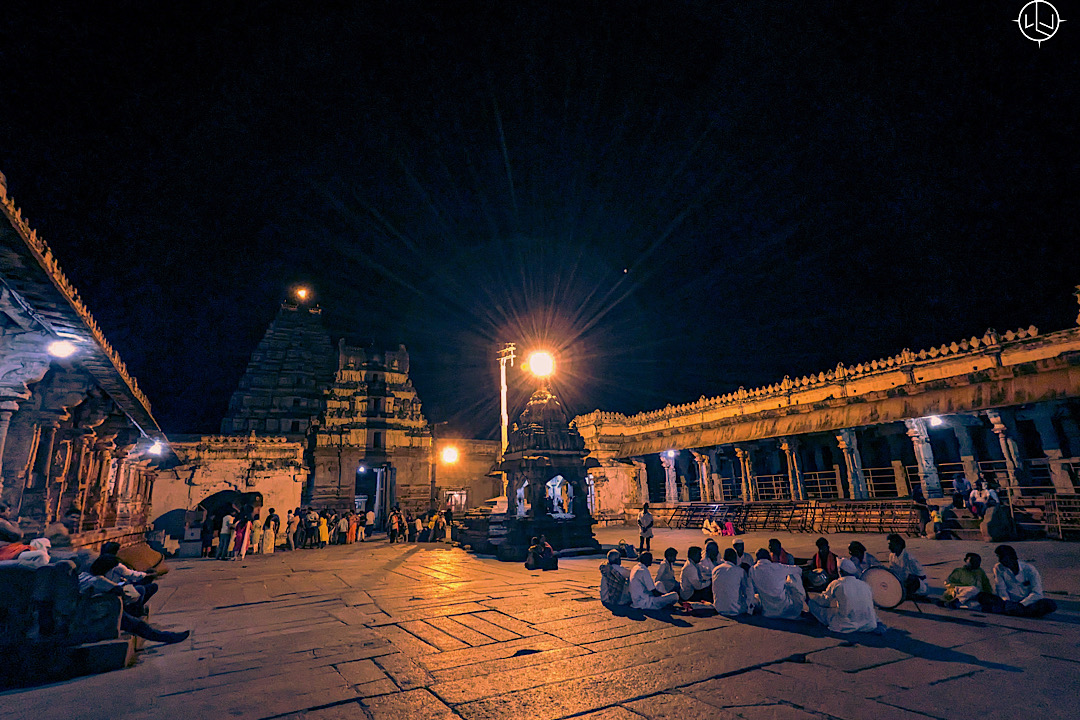
Virupaksha Temple: Hampi, Karnataka
The Virupaksha Temple is located at the south of the Ganesh images, at the foot of the hill called Hemakuta Hill. The temple is commonly referred to as Pampapathi temple by the locals and is the most sacred of the temples of this place. Historically this temple has an uninterrupted history from about the 7th century. What was once a small shrine, in course of time, developed into a large complex under the Vijayanagara rulers.
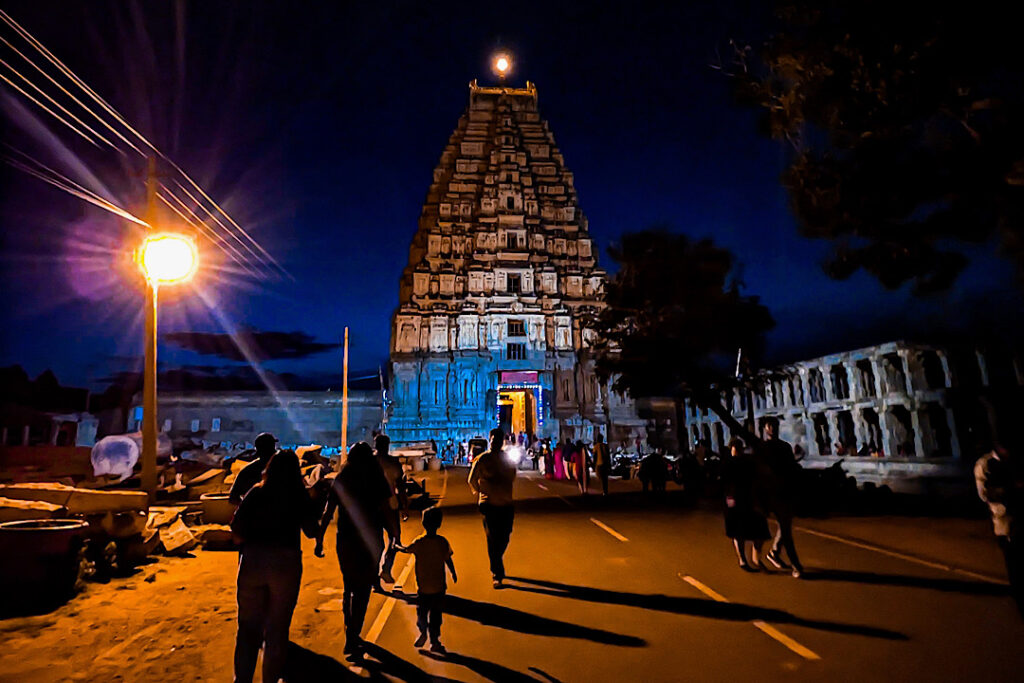
Virupaksha temple
At present, the main temple consists of a sanctum, three antechambers, a pillared hall and a Mukha Mantapa also called Ranga Mantapa surrounded by a pillared cloister, entrance gateways, courtyards, attendant shrines and other mantapas. In 1510 A.D. Krishnadevaraya added the above mentioned Ranga Mantapa
The Ranga Mantapa consists of 38 pillars, relieved with sculptures. These pillars are divided into two vertical section – the first is cut to resemble a rearing Yali – a mythical lion, standing on a Makara, while the second section is basically square with small reliefs depicting mostly Shaiva themes. These pillars are aesthetically composed and dexterously prepared.
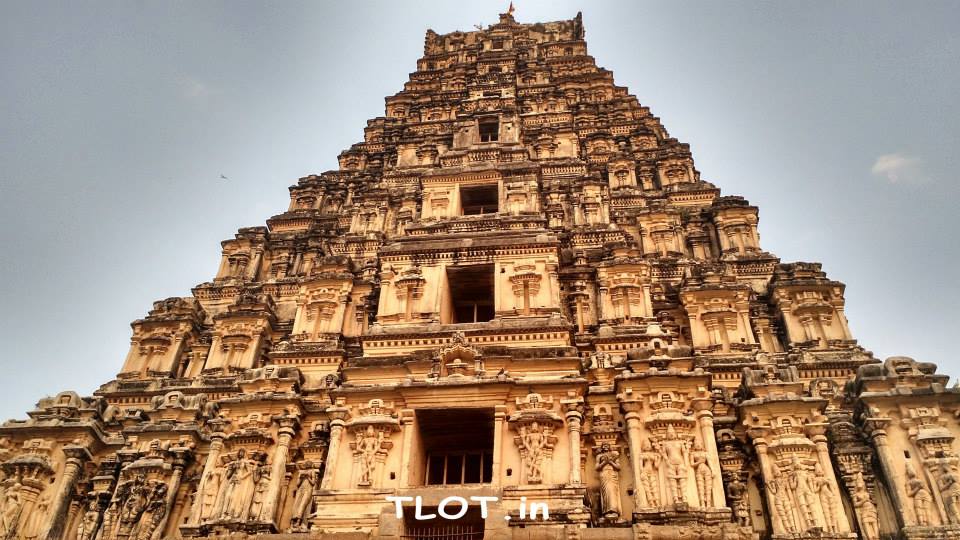
The central ceiling of the Ranga Mantapa is of substantial size. The ceiling, as well as the beams supporting the ceilings, are covered with painted panels. The panel depicts themes from the Mahabharatha, the Ramayana and the Shiva Puranas as well as from the contemporary life.
The other temple of significance in this complex is the shrine for Goddess Bhuvaneshwari. This shrine was rebuilt in the Vijayanagara days. This temple is chiefly noted for its marvellously worked door frame, pillars and articulately chiselled ceiling panels.
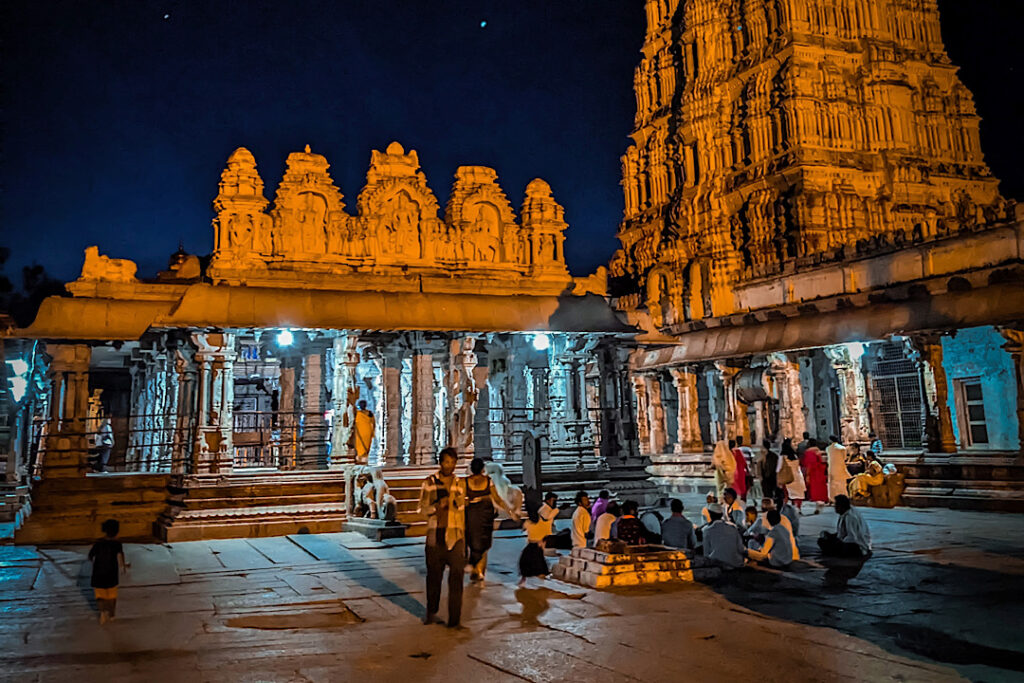
The Virupaksha Temple in Hampi has a rich and fascinating history that spans over several centuries. Here is a brief overview of its historical significance:
1. Ancient Origins: The earliest records of a shrine at the site of the Virupaksha Temple can be traced back to the 7th century. It is believed that the temple was originally a small shrine dedicated to Lord Virupaksha, an incarnation of Lord Shiva.
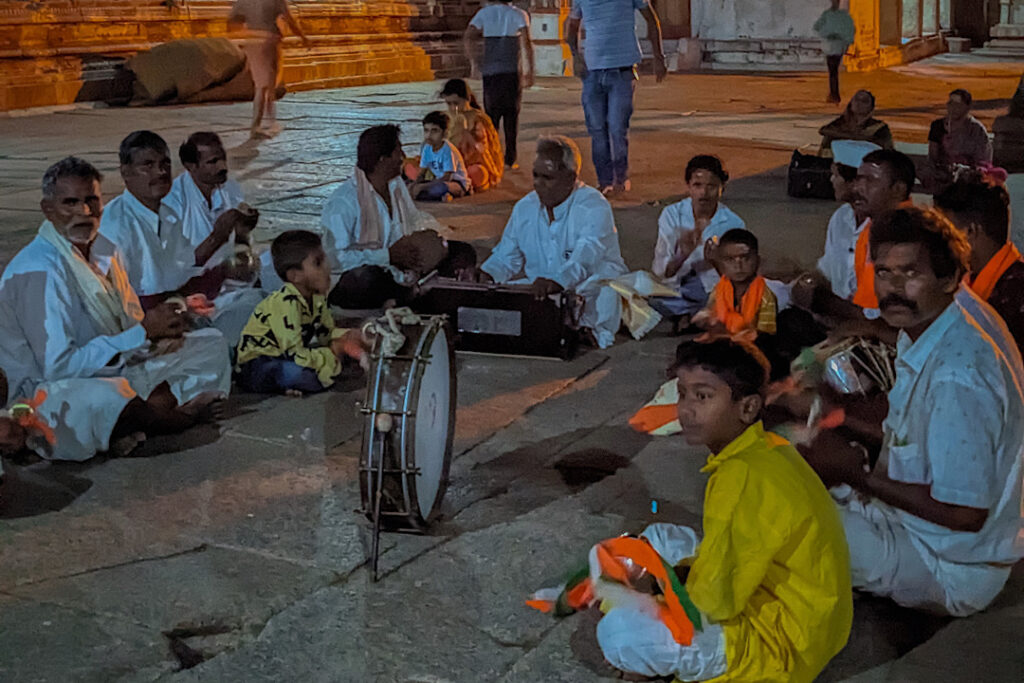
2. Vijayanagara Empire: The temple’s prominence grew during the reign of the Vijayanagara Empire, which ruled Hampi from the 14th to 16th centuries. Under the patronage of the Vijayanagara rulers, the temple was expanded and reconstructed, resulting in the magnificent structure we see today.
3. Patronage of Krishnadevaraya: The temple’s golden period was during the reign of Krishnadevaraya, one of the most famous kings of the Vijayanagara Empire. He undertook significant renovations and additions to the temple, including the imposing gopuram (entrance tower) and various other structures.
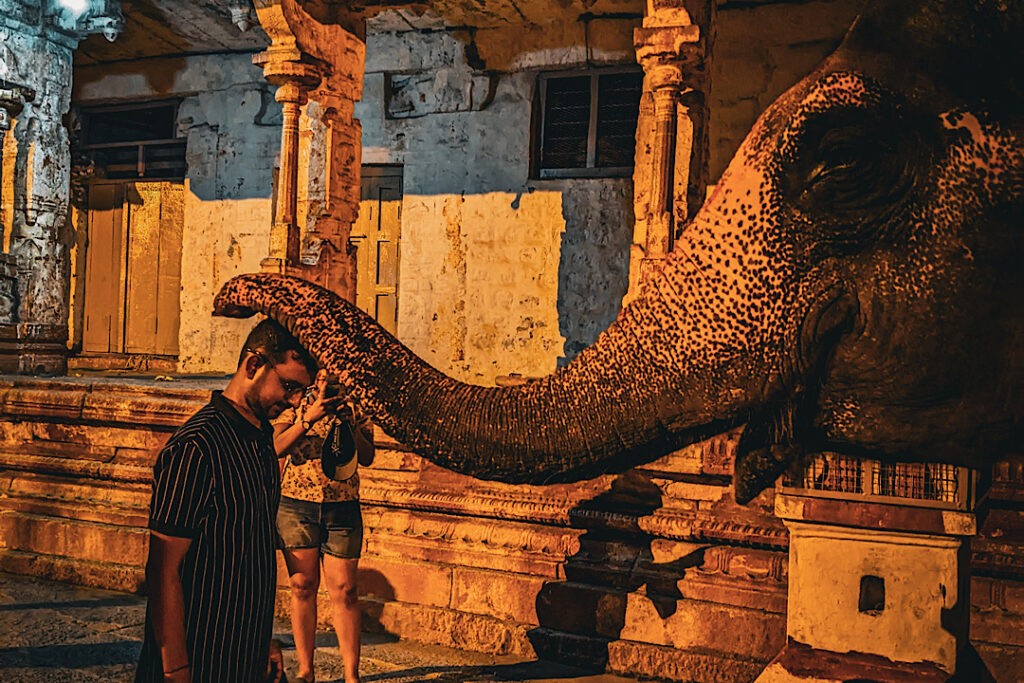
4. Cultural and Religious Significance: Being one of the oldest and most important Shiva temples in South India, the Virupaksha Temple holds immense religious significance. It is believed to be one of the few temples in India where prayers have been offered uninterruptedly since its inception.
5. UNESCO World Heritage Site: Along with the other monuments of Hampi, the Virupaksha Temple was designated as a UNESCO World Heritage Site in 1986. It is recognized for its exceptional architectural and historical value, as well as its representation of the Vijayanagara style of temple construction.
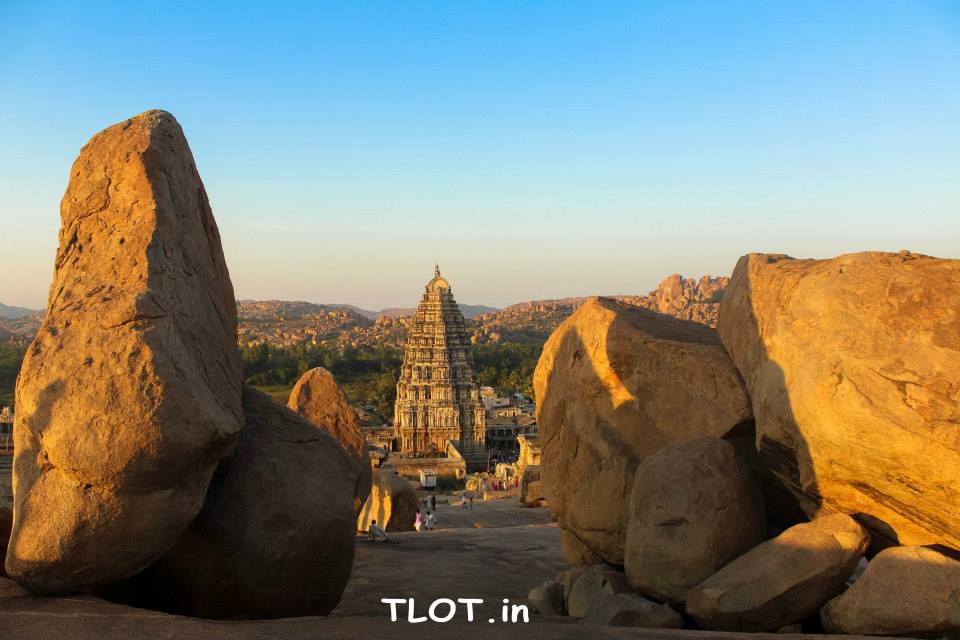
6. Hampi’s Transformation: Hampi was once a thriving city but was destroyed and abandoned after the fall of the Vijayanagara Empire. Despite the city’s decline, the Virupaksha Temple managed to survive and continues to attract devotees, pilgrims, and tourists from all over the world.
Today, the Virupaksha Temple remains an active place of worship, hosting various religious festivals and ceremonies throughout the year. Its architectural grandeur, intricate carvings, and spiritual significance make it a must-visit destination for anyone exploring the historical and cultural heritage of Hampi.
For a similar experience >> Click Here











